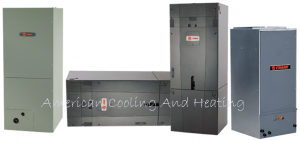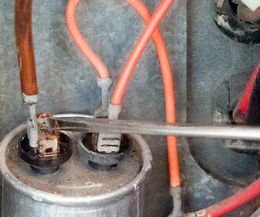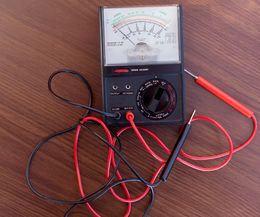Trane Air Conditioning Healthcare Solutions Increase Home Cooling Efficiency
 Trane Air Conditioning Healthcare Solutions – Innovation Commercial and Industrial Upgrades
Trane Air Conditioning Healthcare Solutions – Innovation Commercial and Industrial Upgrades
Trane Air Conditioning healthcare solutions seem ever on the move. The array of new heating and cooling benefits touch both the commercial and the industrial HVAC marketplace. We see it year after year. Some school, medical center, or industrial site reaps renewed and extended benefits from the A/C innovations incorporated into Trane commercial products. For example:
- St. Lucie county school district recently linked with Trane for a new chiller plant upgrade. Benefits of the new system include energy savings and better air-chiller efficiency.
- Hardin Medical Center used Trane Air Conditioning healthcare solutions to upgrade cooling equipment to the tune of a 25-percent reduction in energy and operating costs. Administrators at the Center define the upgrades as cost-efficient while also improving the comfort/satisfaction ratio with patients, physicians and medical staff members.
- The ASHE Annual Conference reveals even more Trane High Performance solutions.
- Jefferson Medical Center (WJMC) called on Trane CDQ™ desiccant dehumidification technology to assure precise temperature and humidity control in the CyberKnife™ robotic surgery system (1). CDQ™ is designed for facilities requiring lower dew point settings. The system can increase cooling coil capacity by 20-300 percent.
But how quickly does a commercial or industrial A/C solution get into the Trane residential Air Conditioning delivery system?
Effects of Commercial Trane HVAC Equipment On Residential A/C Customers
Back in July 2014, a Trane news brief “Trane Showcases High Performance Solutions for the Healthcare Market at ASHE Annual Conference” announced several products and services designed to help healthcare providers improve customer care and support. The changes include three primary components:
- The Performance Climate Changer
- The Trane Wireless Comm
- AND a unique partnership between Trane and Fellon-McCord.
Sounds nifty, but how do these Trane/Ingersoll Rand commercial air conditioning products and air conditioning product reliability promises relate to residential heating and cooling customers? Well… Let’s consider for a moment the purpose and features of the Trane Performance Climate Changer™ (PCC):
Crafted to deliver better indoor air quality, energy efficiency and occupant comfort over a wider range of applications than what is available via previous products, the Trane Performance Climate Changer™ air handler systems enable better cost-control and business budget management. Furthermore, the PCC air handler delivers optimized airflow throughout the entire HVAC system. Constructed with double-wall casing panels and high-performance foam insulation, the units can be tailor designed to fit a specific application. The superior casing design reduces air leakage and wasted energy consumption. Some configurations even feature SDDPtm fan arrays. But…
The units are designed for commercial applications. Homes don’t need these high-performance HVAC systems. Yet every business product eventually changes the daily lifestyle of the human creature. For example: Popular Mechanics reports that the first discovery of the cooling effects associated with liquid evaporation took place in 1758. Yet it was 1902 before Willis Carrier invented his Apparatus for Treating Air. Twelve years later air conditioning finally reached the residential environment. By the 1950s, home air conditioning was defined as “just another way to keep up with the Joneses.”
Maybe we don’t need a home version of the Trane Performance Climate Changer™. But whenever corporate entities introduce new technology into the business world, eventually the average homeowner will prosper from that technology. For years, Trane Air Conditioning healthcare solutions have helped the company find better ways to serve the residential HVAC marketplace. It’s the kind of technology I want when cooling my home. Who knows how much of the PCC technology will eventually help reduce my home heating and cooling bill. Ask your Arizona AC service center to help you make sure you don’t miss out on the benefits of Trane HVAC technology.
Get more information on Trane residential High-Efficiency Air Handlers.
American Cooling and Heating Serving Arizona
Licensed Bonded Insured:
- AZROC K79 license 183933 Residential, Commercial, Industrial, HVAC and Refrigeration Contractor.
- AZROC KB2 license 238225 Residential, Commercial General Contractor.
- TDLR TACLA21146C Residential, Commercial, Industrial, HVAC and Refrigeration Contractor.


